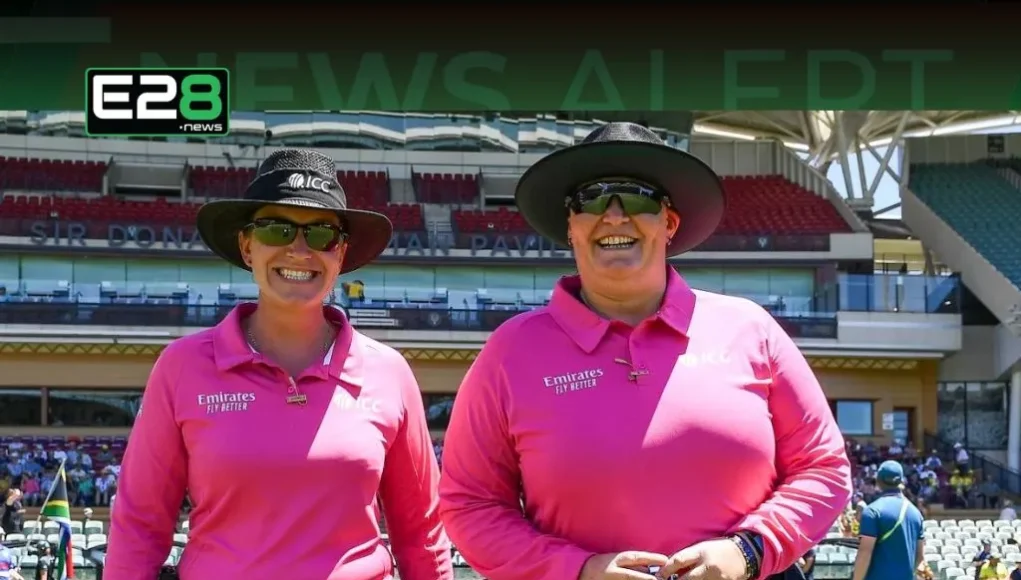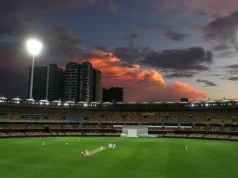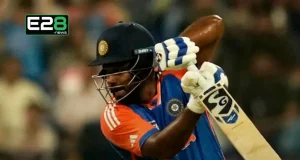Umpiring standards at the Women’s World Cup 2025 have come under scrutiny, as several contentious calls have sparked debate during the first two-and-a-half weeks of the tournament. Much of the discussion has focused on the use of the Decision Review System (DRS), which is still not consistently applied in the women’s game. As a result, the experience and familiarity of umpires with DRS protocols have been closely examined.
Controversial Calls in Key Matches
One of the most talked-about incidents occurred in the England vs Bangladesh match. England captain Heather Knight received three reprieves, including a low catch off Shorna Akter. Chasing 179, Knight edged legspinner Fahima Khatum to Shorna at cover while on 13 runs. Although Knight was ready to walk, TV umpire Gaythri Venugopalan ruled the evidence inconclusive. Earlier in the same match, a caught-behind appeal was overturned by the third umpire, who judged that the ball had hit Knight’s pad before reaching the wicketkeeper.
“𝑰 𝒅𝒊𝒅 𝒕𝒉𝒆 𝒑𝒓𝒆𝒔𝒆𝒏𝒕𝒂𝒕𝒊𝒐𝒏 𝒕𝒉𝒂𝒕 𝒆𝒗𝒆𝒏𝒊𝒏𝒈 𝒂𝒏𝒅 𝑰 𝒑𝒖𝒕 𝒊𝒕 𝒕𝒐 𝑯𝒆𝒂𝒕𝒉𝒆𝒓 𝑲𝒏𝒊𝒈𝒉𝒕, 𝒂𝒏𝒅 𝒔𝒉𝒆 𝒅𝒊𝒅 𝒏𝒐𝒕 𝒔𝒊𝒕 𝒐𝒏 𝒕𝒉𝒆 𝒇𝒆𝒏𝒄𝒆 𝒂𝒕 𝒂𝒍𝒍. 𝑺𝒉𝒆 𝒔𝒂𝒊𝒅, ‘𝑰 𝒕𝒉𝒐𝒖𝒈𝒉𝒕 𝒊𝒕 𝒘𝒂𝒔 𝒐𝒖𝒕, 𝑰 𝒘𝒂𝒔 𝒘𝒂𝒍𝒌𝒊𝒏𝒈 𝒐𝒇𝒇.’ 𝑺𝒉𝒆 𝒉𝒂𝒅 𝒏𝒆𝒗𝒆𝒓 𝒃𝒆𝒆𝒏 𝒈𝒊𝒗𝒆𝒏 𝒐𝒖𝒕 𝒔𝒐 𝒎𝒂𝒏𝒚 𝒕𝒊𝒎𝒆𝒔 𝒊𝒏 𝒐𝒏𝒆 𝒎𝒂𝒕𝒄𝒉,” 𝒔𝒂𝒊𝒅 𝑵𝒂𝒔𝒔𝒆𝒓 𝑯𝒖𝒔𝒔𝒂𝒊𝒏, 𝒃𝒓𝒐𝒂𝒅𝒄𝒂𝒔𝒕𝒊𝒏𝒈 𝒂𝒕 𝒕𝒉𝒆 𝒕𝒐𝒖𝒓𝒏𝒂𝒎𝒆𝒏𝒕, 𝒂𝒔 𝒒𝒖𝒐𝒕𝒆𝒅 𝒃𝒚 𝑬𝑺𝑷𝑵𝒄𝒓𝒊𝒄𝒊𝒏𝒇𝒐.
Another controversial decision emerged during the India vs Pakistan clash, when Muneeba Ali’s run out was initially ruled not out on the big screen but later overturned. TV umpire Kerrin Klaaste had not reviewed all the footage before the first call, prompting the player and captain Fatima Sana to seek clarification. Similarly, India’s match against South Africa featured a disputed not-out LBW for Sune Luus. At the same time, in the India-Australia game, Sneh Rana’s point catch to dismiss Alyssa Healy was first questioned before being ruled clean.
“𝑰𝒇 𝒚𝒐𝒖 𝒌𝒆𝒆𝒑 𝒛𝒐𝒐𝒎𝒊𝒏𝒈 𝒊𝒏 𝒐𝒏 𝒓𝒆𝒑𝒍𝒂𝒚𝒔, 𝒚𝒐𝒖’𝒍𝒍 𝒇𝒊𝒏𝒅 𝒕𝒉𝒊𝒏𝒈𝒔. 𝑻𝒉𝒆 𝒕𝒉𝒊𝒓𝒅 𝒖𝒎𝒑𝒊𝒓𝒆 𝒅𝒊𝒅𝒏’𝒕 𝒂𝒔𝒌 𝒇𝒐𝒓 15 𝒅𝒊𝒇𝒇𝒆𝒓𝒆𝒏𝒕 𝒂𝒏𝒈𝒍𝒆𝒔—𝒋𝒖𝒔𝒕 𝒂 𝒈𝒖𝒕 𝒇𝒆𝒆𝒍. 𝑻𝒉𝒂𝒕’𝒔 𝒂𝒍𝒘𝒂𝒚𝒔 𝒘𝒐𝒓𝒓𝒚𝒊𝒏𝒈 𝒘𝒉𝒆𝒏 𝒘𝒂𝒕𝒄𝒉𝒊𝒏𝒈 𝒂𝒕 𝒉𝒐𝒎𝒆,” 𝑯𝒖𝒔𝒔𝒂𝒊𝒏 𝒂𝒅𝒅𝒆𝒅 𝒓𝒆𝒈𝒂𝒓𝒅𝒊𝒏𝒈 𝑯𝒆𝒂𝒍𝒚’𝒔 𝒅𝒊𝒔𝒎𝒊𝒔𝒔𝒂𝒍.
World Cup: Inexperience with DRS Raises Questions
Of the ten umpires assigned TV duties at this World Cup, only three—Sue Redfern (42 ODIs), Eloise Sheridan (25), and Kim Cotton (24)—have previously served as TV umpires in more than 20 ODIs with DRS available. Five of the ten, including Candace la Borde, N Janani, and Sarah Dambanenava, had minimal to no prior DRS experience. This lack of familiarity may explain the high number of overturned decisions, with 25 successful reviews in 36 innings—an average of 0.67 per innings—compared to 0.46 in the men’s 2023 Asia-based ODI World Cup.
The ICC has not commented on the umpires’ experience with DRS or whether teams formally raised concerns. However, umpire manager Sean Easey has been present at several venues throughout the tournament. The incidents have intensified conversations around consistency and accuracy of officiating in women’s international cricket, highlighting the challenges of integrating DRS in the women’s game.
Also Read: Attack Claims Lives of Afghan Cricketers, Tri-Series with Pakistan Cancelled
















